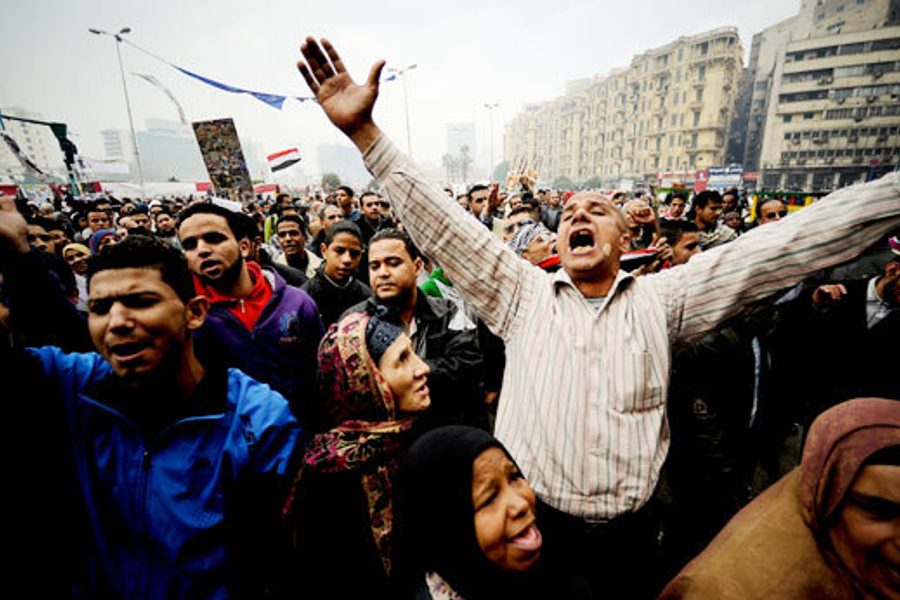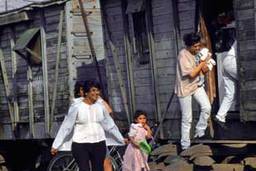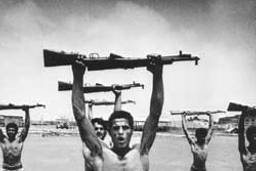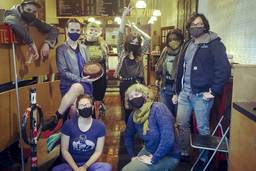Egypt’s Revolution Is Not Over
Hosni Mubarak resigned as president last February, but the violent struggle for democracy continues.
James North

CAIRO – If you demonstrate in Tahrir Square in the heart of this giant metropolis, you continue to risk your life. You might only be tear-gassed, or clubbed, or shot with rubber bullets that usually do not kill. But scattered among the police and military are snipers, with live ammunition.
The snipers figure into cold calculations by the military, which recognizes that if it opens fire indiscriminately, it will lose even more support across the nation. But it cannot allow mass rallies to get too large. Hence the calculated use of the snipers, and the ongoing trickle of demonstrator deaths. Over a four-day period in December, the Army killed 13 in the square. Another element of the military’s strategy is to promote more disorder by pulling back its security forces across the city outside Tahrir. Morqos Girgis, a young lawyer, explains: “If you report a problem to the police now, they say it is not their concern. They are hoping that the rising insecurity will force the people to demand that they return.”
Hosni Mubarak resigned as president in February 2011 following weeks of mass protests in the square, but many of the military and industrial elites that surrounded him still hold on to power, and are now delaying civilian rule – and trying to remain above it – despite their professed support of democracy. The generals who run the country via the Supreme Council of the Armed Forces say they will step aside after a new president is sworn in. (As protesters continue to die, the United States remains close to the country’s military, giving it $1.3 billion a year, and perhaps the “made in the U.S.A.” tear gas canisters sometimes left in the square.)
Demonstrators are predominately middle class, and most Egyptians respect their courage in pushing Mubarak from power last year (he and his two sons are now on trial). But the poor majority is also anxious about continuing disorder and the sputtering economy.
Impoverished Egyptians’ wariness has been partly reflected in the three-stage parliamentary election, which ends on January 23. After a historic turnout, the two big winners were the more cautious Islamist parties: the Muslim Brotherhood and the even more conservative Salafists. The “liberals” – those who started Egypt’s revolution on January 25, 2011, and who continue to risk their lives in Tahrir Square to safeguard it – came in third. No one doubts that, despite some irregularities, the election results represent the will of the Egyptian people. Just about everyone is delighted that the candidates linked to the Mubarak family, the so-called felool, or “remnants,” are doing worse than expected.
Those remnants, along with the still-ruling military, underestimate the determination of the Egyptian people. Every time the Supreme Council tries to delay or undermine the revolution, demonstrators flood into Tahrir Square again. Its efforts to sharply limit the powers of the new Parliament have been blocked, for now, as was its attempt to postpone the election of a president.
A key factor in the months to come is the Muslim Brotherhood, the organization founded in 1928 that, with about 40 percent of its seats, will almost definitely be the largest single party in the new Parliament. Islamophobes in the United States and elsewhere have long slandered the nonviolent Brotherhood, which runs a network of health clinics and other neighborhood services that provided a contrast to the Mubarak regime’s corrupt or nonexistent facilities.
Despite ongoing violence, Egypt remains a place of hope and possibility. Girgis, a Coptic Christian who fears sectarian conflict and who has risked his life in Tahrir Square, points out that previous upheavals in Egypt’s history were associated with a single leader. “This time, there was no single leader,” Girgis says. “This time, the Egyptian people rose up together.”

I hope you found this article important. Before you leave, I want to ask you to consider supporting our work with a donation. In These Times needs readers like you to help sustain our mission. We don’t depend on—or want—corporate advertising or deep-pocketed billionaires to fund our journalism. We’re supported by you, the reader, so we can focus on covering the issues that matter most to the progressive movement without fear or compromise.
Our work isn’t hidden behind a paywall because of people like you who support our journalism. We want to keep it that way. If you value the work we do and the movements we cover, please consider donating to In These Times.







